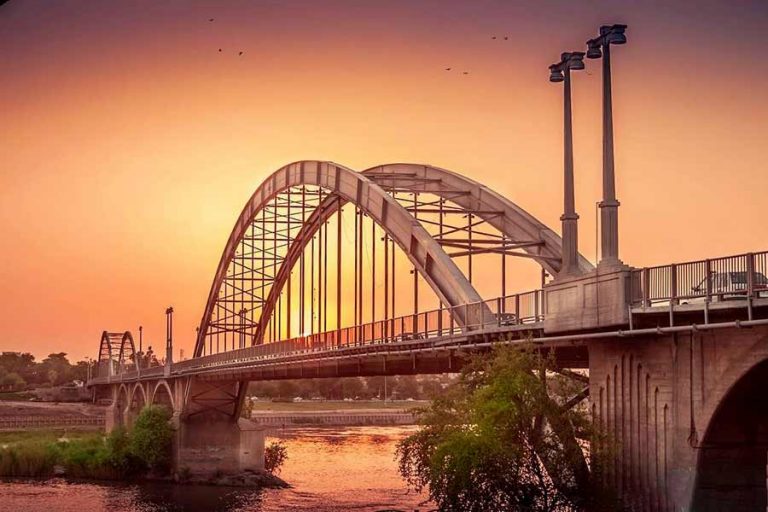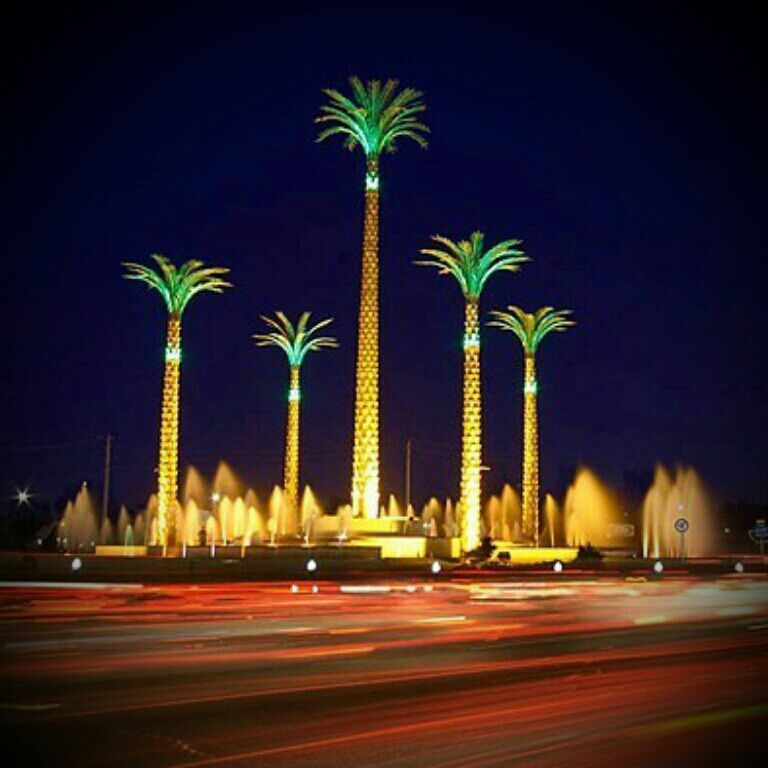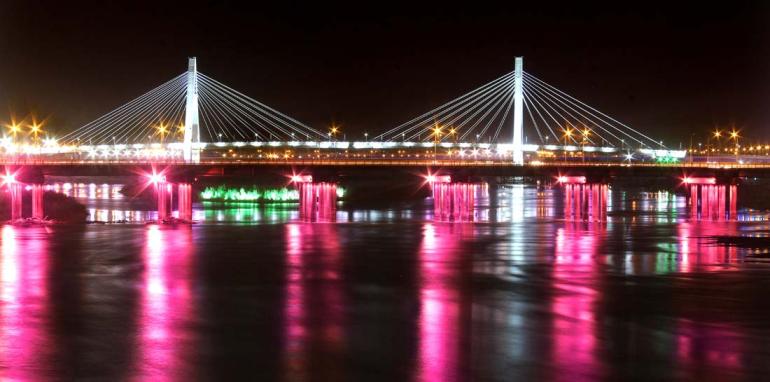


Located on the Karun River, Ahvaz developed as a flourishing pre-Islamic city, and it became the capital of the province of Khuzistan in the late tenth century. Its silk textile and sugar production were very important. Ahvaz declined after the Mongol invasions.
Ahvaz is the anagram of “Avaz” and “Avaja” which appear in Darius’s epigraph. This word appears in Naqsh-Rostam inscription as “Khaja” or “Khooja” too. First named Ōhrmazd-Ardašēr it was built near the beginning of the Sassanid dynasty on what historians believe to have been the site of the old city of Taryana, a notable city under the Persian Achaemenid dynasty, or the city of Aginis referred to in Greek sources where Nearchus and his fleet entered the Pafitigris. It was founded either by Ardashir I in 230 or by his grandson Hormizd I; the town’s name either combined Ardashir’s name with the Zoroastrian name for God, Ōhrmazd or Hormizd’s name with that of his grandfather. It became the seat of the province and was also referred to as Hūmšēr. During the Sassanid era, an irrigation system and several dams were constructed, and the city prospered. Examples of Sassanid-era dams are Band-e Bala-rud, Band-e Mizan, Band-e Borj Ayar and Band-e Khak. The city replaced Susa, the ancient capital of Susiana, as the capital of what was then called Khuzestān. The city had two sections; the nobles of the city lived in one part while the other was inhabited by merchants.When the Arabs invaded the area in 640, the part of the city home to the nobility was demolished but the Hūj-ī-stānwāčār “Market of Khūz State”, the merchant area, remained intact. The city was therefore renamed Sūq al-Ahwāz, “Market of the Khuz”, a semi-literal translation of the Persian name of this quarter – Ahwāz being the Arabic broken plural of Hûz, taken from the ancient Persian term for the native Elamite peoples, remaining in medieval khūzīg “of the Khuzh” and modern Khuzestān “Khuz State”, as noted by Dehkhoda dictionary.
During the Umayyad and Abbasid eras, Ahvaz flourished as a center for the cultivation of sugarcane and as the home of many well-known scholars. It is discussed by such respected medieval historians and geographers as ibn Hawqal, Tabari, Istakhri, al-Muqaddasi, Ya’qubi, Masudi, and Mostowfi Qazvini. Nearby stood the Academy of Gundishapur, where the modern-day teaching hospital is said to have been first established. Ahvaz was devastated in the bloody Mongol invasions of the 13th and 14th centuries and subsequently declined into a mere village. The dam and irrigation channels, no longer maintained, eroded and finally collapsed early in the 19th century. During this time Ahvaz was primarily inhabited by the original Khuzhis (Persians) and a small number of Sabians. Although most Arab migrants fled the city, a few stayed. Some minor cultivation continued, while all evidence of sugarcane plantations is still going on in Haft Teppe area in the north of Ahvaz, although ruins of sugarcane mills from the medieval era remained in existence. Several ruins of water mills also still remain in Shoush and Shoushtar.
Across from Institute of Water and Power, Golestan Y way, Golestan Boulevard, Ahvaz
Total: 2 hotels . Showing 1 - 2 view all
Not what you're looking for? Try your search again
Total: 2 tours . Showing 1 - 2 view all
Not what you're looking for? Try your search again
Click me below to chat on WhatsApp or send us an email to info@whypersia.com